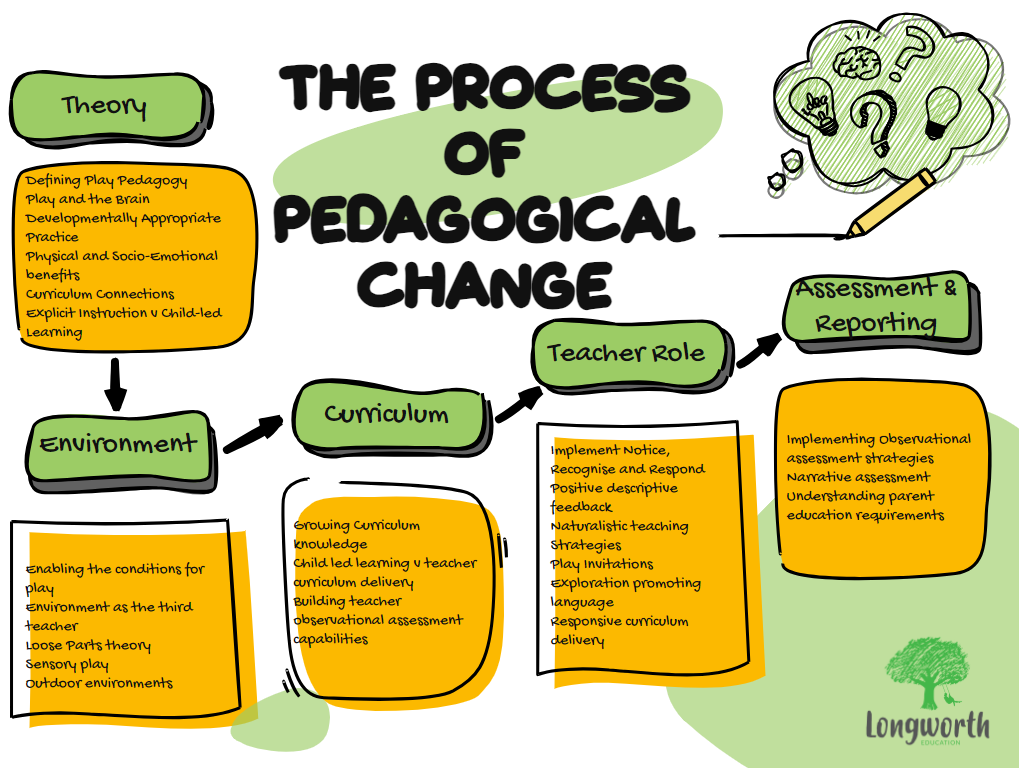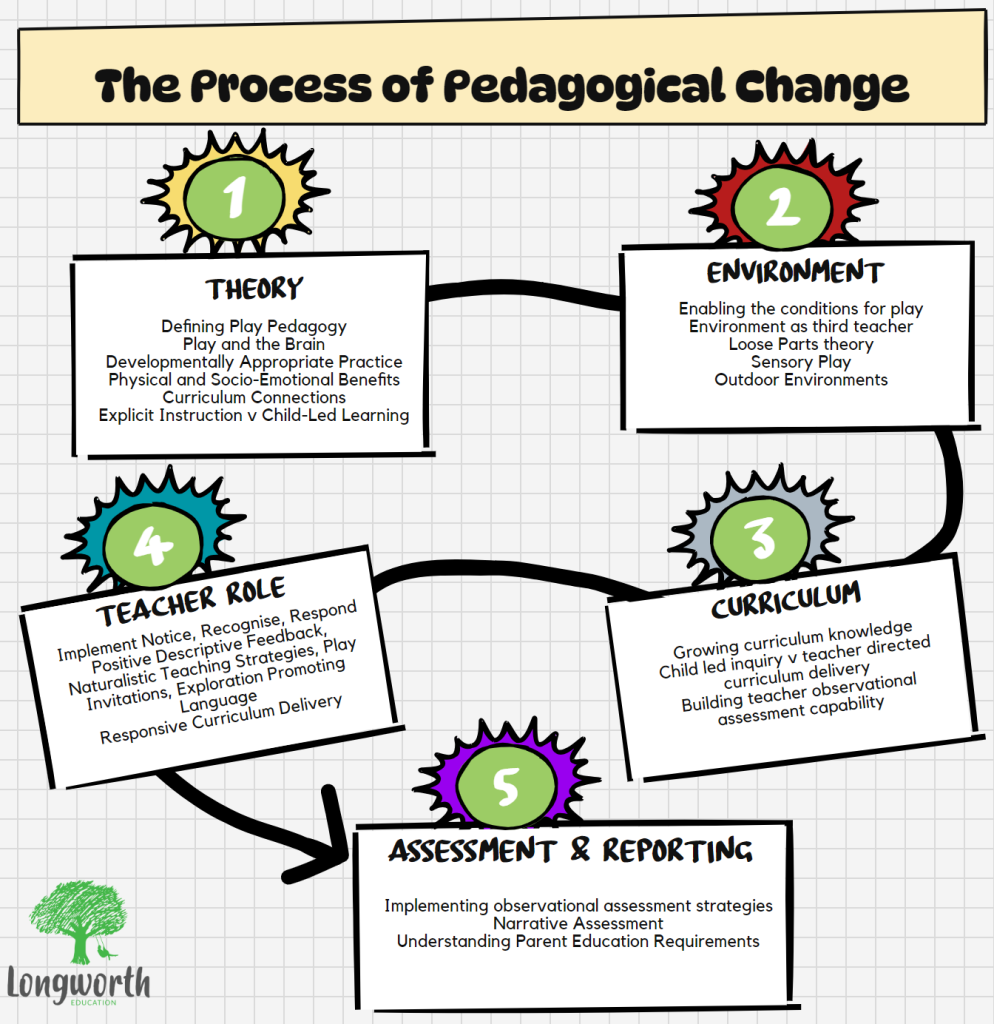No products in the cart.

Embracing a Child-Centred, Agentic Curriculum: A Journey Towards Meaningful PedagogicalChange
The transition to a child-centred, agentic curriculum is a transformative process that requires careful
consideration and strategic implementation. Schools embarking on this journey must navigate the
dichotomy between achieving rigorous learning outcomes and fostering student agency through
dispositional and skills-based learning opportunities. The Future of Jobs report by the World
Economic Forum underscores the importance of skills such as critical thinking, problem-solving, and
creativity, which are best nurtured through play-based, student-centred learning. However, a
significant knowledge-to-practice gap exists between what we know about these benefits and how
we interpret and implement them in classroom settings.
This blog post will unpack each stage of the process of pedagogical change, highlighting key
considerations and actions schools can take to ensure children make the necessary progress while
adhering to curriculum objectives. It’s important to recognise that this journey is not for the faint-
hearted. Despite play being perceived as trivial and child-centred learning seen as a bougie concept,
choosing this pedagogical approach is indeed the road less taken.

Stage 1: Theory
Understanding the theoretical underpinnings of play pedagogy is the first step. This involves defining
play pedagogy, recognising the physical, socio-emotional, and cognitive benefits of play, and aligning
these with curriculum connections. Play and the brain, developmentally appropriate practice, and
the balance between explicit instruction and child-led learning are crucial components.
Developmentally appropriate practices (DAP) ensure that teaching approaches are suited to the
developmental stages of children, fostering a rich learning environment that supports their growth
holistically.
Stage 2: Environment
Creating an environment that supports play is vital. This includes viewing the environment as the
“third teacher,” integrating loose parts theory, and providing opportunities for sensory and outdoor
play. Enabling conditions for play involves setting up spaces that encourage exploration, creativity,
and interaction. Outdoor play, in particular, has been shown to enhance physical health, cognitive
development, and emotional well-being, as it allows children to engage in more active and diverse
forms of play.
Stage 3: Curriculum
The curriculum must evolve to support a child-centred approach. This involves growing curriculum
knowledge, balancing child-led inquiry with teacher-directed activities and building teachers’
observational assessment capabilities. The curriculum should be flexible enough to incorporate play-
based learning while ensuring that key academic objectives are met. Schools around New Zealand
have successfully integrated play-based learning with formal literacy and numeracy instruction,
demonstrating that academic rigour can coexist with play pedagogy.
Stage 4: Teacher Role
Teachers play a pivotal role in implementing a child-centred curriculum. They need to adopt
strategies such as “Notice, Recognise, Respond” to effectively support and extend children’s learning
through play. Positive descriptive feedback, naturalistic teaching strategies, and responsive
curriculum delivery are essential. Intentional teaching involves a delicate balance between guiding
children and allowing them autonomy in their learning. This approach requires teachers to be
observant, adaptable, and knowledgeable about how to scaffold learning experiences based on
children’s interests and developmental needs.
Stage 5: Assessment & Reporting
Assessment in a play-based learning environment involves observational strategies, narrative
assessments, and understanding parent education requirements. Learning stories, as a form of
narrative assessment, provide a qualitative analysis of children’s learning and development. This
method captures the depth and breadth of children’s experiences and achievements, offering a
more holistic view of their progress compared to traditional assessments. It also aligns with the
competencies-based approach of the New Zealand curriculum, ensuring that children’s learning in
areas such as self-management, creativity, and problem-solving is recognised and valued.
The journey towards a child-centred, agentic curriculum is a comprehensive process that involves
rethinking theory, redesigning environments, revising curricula, redefining teacher roles, and
reshaping assessment practices. By following the stages outlined in the “Process of Pedagogical
Change,” schools can create a learning environment that is both engaging and academically rigorous,
fostering the holistic development of every child. As educators, it is our responsibility to ensure that
our teaching practices not only meet curriculum objectives but also support the overall well-being
and growth of our students.
For more information on schools around New Zealand successfully implementing this pedagogy,
[click here to explore our case studies].


